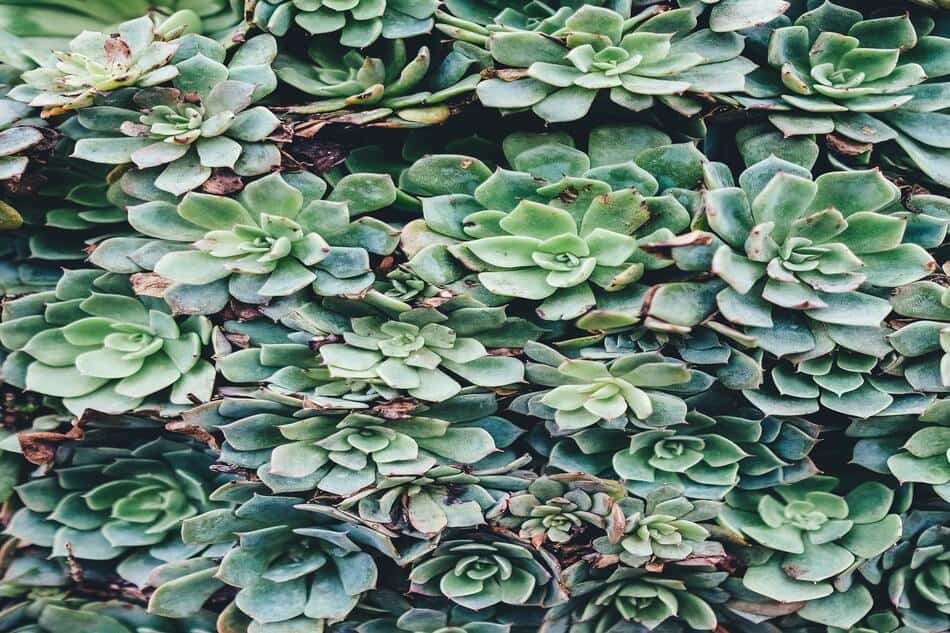If you’re a hydroponic gardener, you know that keeping your plants healthy is essential for harvesting a bountiful crop. Unfortunately, even the healthiest plants can sometimes start wilting for no apparent reason. So, what’s the cause and how can you fix it? In this article, I’ll take a closer look at why hydroponic plants might wilt and how to address the problem.
Yes, there are dozens of reasons why your hydroponic plants might be wilting, but the most likely culprit is a lack of water. If your plants are droopy and their leaves are beginning to turn brown, it’s time to give them a good drink.
What Is Causing the Wilting Of My Hydroponic Plants?
Many people prefer hydroponic plantations over other types since soil-borne plants rely heavily on water to grow, as they require dirt to get nutrients. However, plants in the hydroponic plantation can wilt or droop because they lack the nutrients they receive from dirt.
When a tree is weakened by disease or insect attack, it becomes more susceptible to natural processes of decay that can weaken the trunk and ultimately lead to its destruction. I’ve discussed how this happens in detail here so you know what steps need to be taken now if your goal is preserving healthy trees for future generations!
Read Related Article About: How To Open A Hydroponic Store?
1. Plant Diseases
The drooping of plants is not something that you should be concerned about. This occurs because various diseases affect the way they grow and function, causing them to become listless or curved over in an unnatural manner.
Diseases such as powdery mildew and gray mold can cause serious structural damage if left unchecked which makes it important for homeowners who want healthy-looking landscapes with minimal maintenance needs – like me!
Are you familiar with the white powdery substance that most green plants have on their stems or leaves? These fungal infections are known as ” Powdery Mildew” and they occur when the plant is not getting enough light.
Because gray mold absorbs nutrients that plants need to grow, it is a serious problem for trees. Powdery mildew spreads slowly, but this fungus will attack not only healthy wood but also dried up branches and leaves on your Christmas tree!
It is possible to get infected branches brittle enough to break at their base due to a combination of excessive winter moisture in the air and cold temperatures. Secondly, when the trees are not in use, they must be stored correctly.
2. Root Rotten
Hydroponics is done in water, so roots do not get enough oxygen. When you see yellow or brown leaves on your plant and it has a withered look to its base then this could be an indication that there’s something wrong with its root system–caused by lack of airflow since plants must stay underwater for the most part while growing anyway; therefore I can say hydroponics causes rotted bases too!

3. Nutritional deficiencies
Yellow leaves and drooping trees are often caused by an insufficient supply of nutrition. Copper and chlorine magnesium are all essential to a healthy tree but they won’t be able if there isn’t enough variety in their diet!
However, if you’re looking to make your garden more vibrant and alive then the plants must be well-nourished. With all this talk about fallen leaves why not feed them?
Mealtimes vary depending on what type of food they prefer – some might need less water than others because their metabolism allows for greater energy output; other types may require extra attention during autumn months due to entirely too much sun exposure before budding out into beautiful flower shapes with gorgeous colors!
4. Pests Attack
Hydroponic plants are susceptible to several pests that affect their growth and development. Some common types include: aphids or lice, spider mites (which can cause harmful effects like webbing), thrips insectivore insects such as fungus gnats which feed on plant juices causing stuntronization; whiteflies attack often too!
The pests that affect plants, such as tomato and cannabis roots or lettuce leaf veins can cause drooping. This is because they feed on plant tissue which results in damaged cells; it also affects how well your garden thrives by making its leaves dull-looking–a problem hydroponic growers must take into account when choosing their seeds!
Also Read: How Long Do Hydroponic Plants Last?
Getting Rid Of Wilting Hydroponics Plants
Look for signs that your plant is suffering. Seeing the roots beneath the surface of the trunk will help you determine if there is any rot there, or in case there is, remove those roots immediately. Hydrogen peroxide should be applied following the removal of roots, but only in an amount that prevents the damage. After that, plant it elsewhere where fresh dirt will suffice instead (you want plenty of space!).
To get a plant back on its feet, you’ll want to make sure there’s no shortage of oxygen supply for its roots. Disinfect thoroughly and replace the sickly stem with fresh water before you reposition it in your tub, pot, or aquarium!
Fungi can be an issue for trees, but thankfully there are solutions. If you notice fungus on your plant or it’s infected by one and needs trimming away from other healthy parts of the tree- don’t worry! Just make sure to mix up the spray solution with water as suggested by your diagnosis (or use both). And if all else fails–prise off any diseased branches so they won’t spread their evil throughout more land.
Vinegar, Baking soda, and water can all be used to treat powdery mildew caused by potassium bicarbonate.
Pesticides should not harm plants when they are used. If necessary for an emergency in which you cannot avoid harming your plants use botanists as a last resort!
Mix a solution into the water in your tub to correct the nutrient deficiency. This will make it so that plants are no longer malnourished and retain their immunity, which causes them to become dull-looking as well!
Are you going to start hydroponics and are you interested to know: How Much Does Hydroponics Cost?
What Is The Best Way To Prevent Hydroponic Plant Drooping?

Wilted flowers are a sad sight to see, but don’t worry! There’s plenty you can do about it. In this article, I will give you some tips on preventing hydroponic plant drooping as well as other common problems with wilting leaves and dropping stems – all with proper air or water circulation in the system (depending on what is causing them). Here are the steps:
- It is possible to use simple air stones and fans to create dissolved oxygen.
- Keep the area around the plant clean and sterilize it regularly.
- Make sure the soil is regularly watered, the water is changed and nutrients are added. Do not overfeed the soil with nutrients.
- Plants need sunlight to thrive.
By following these steps, you can prevent your plants from wilting.
In Conclusion
Hydroponics is the new way to grow plants and it’s more than just a fad. Hydroponic systems are easy to use, so they are popular globally. If you don’t give your hydroponic plant the care it needs, it could get ill.

